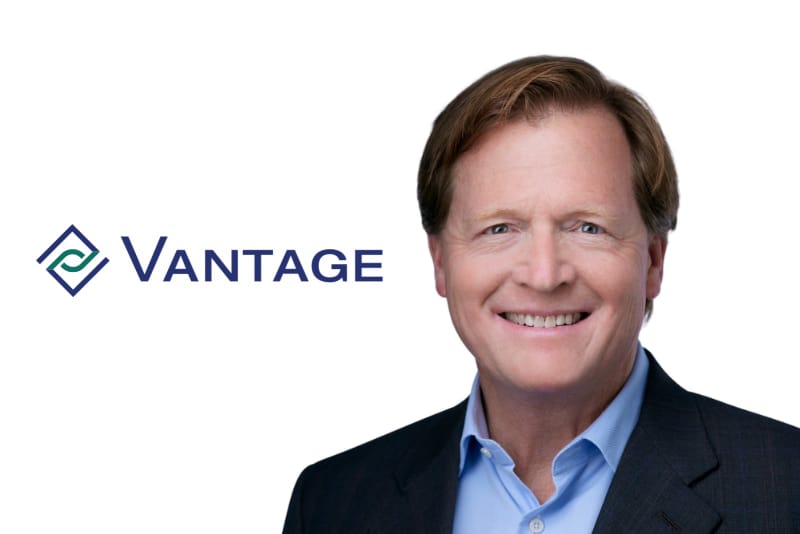As investor appetite continues to broaden beyond property catastrophe, Vantage Risk is building a “mosaic of capital providers,” matching different investors with different risks, from short-tail cat exposures to long-tail casualty and credit lines, according to Chris McKeown, Chief Executive, Reinsurance, ILS, and Innovation. Speaking with Artemis around the key reinsurance industry conference season, McKeown discussed Vantage Risk’s ongoing diversification strategy.
Speaking with Artemis around the key reinsurance industry conference season, McKeown discussed Vantage Risk’s ongoing diversification strategy.
When we last spoke to McKeown in June, he noted that Vantage’s Partnership Capital platform had been exploring expansion into marine, energy, aviation, and cyber lines, leveraging Vantage’s expertise
We began by asking whether there had been any movement since then.
“There’s been a lot of activity outside of the property catastrophe space, with a number of investors interested in accessing more of the value chain. Property cat continues to grow in investor interest and demand for that risk in their portfolios, it’s directionally non-correlating, it’s got its own set of risks that are interesting to investors and understandable to investors.
“We’ve seen a real outgrowth of interest beyond the property cat space in the last year. There are a number of vehicles that have been put in place,” McKeown explained.
“I think that it’s acknowledging to some degree, one of the themes that we were exploring when we set up Vantage which was to participate across the value chain, insurance, reinsurance, and let’s think about from day one access to capital. We’re very proud of our private equity capital that we have to support the balance sheet, but we also went out in the first year to access capital through a cat bond, as well as to manage third-party capital,” he continued.
“We’re aware that there are other pools of capital that we need to bring into the business and manage appropriately to have a mosaic of capital providers to match the risk that is appropriate for that capital.”
McKeown noted that this year, fueled by strong inflows into private debt and private credit, investor capital has shown growing interest in longer-term liabilities that align with most insurance and reinsurance risks, which are longer-tail than property catastrophe.
“We have $1.5 billion property cat partnership capital, and we’re now seeing more interest in our longer tail lines, whether it’s excess casualty, professional credit, construction or health care, and investors looking to partner with us through a segregated cell type structure.
“It’s a little premature in the sense that we have plenty of balance sheet capital for those lines of business, but thinking longer term as a private equity, privately held company eventually, we want to be able to access these different forms of capital and be the intermediary between risk and capital and provide our underwriting insights and capabilities in that seat,” McKeown added.
Moreover, that multi-source approach to capital is already visible in Vantage’s current portfolio structure.
The company has deployed the full amount of its $1.5 billion partnership capital this year, supporting just over $2 billion of limit. That limit can be divided into three roughly equal parts: one-third retro, one-third property occurrence/property catastrophe occurrence, and one-third aggregate contracts.
“Aggregate contracts are somewhat unique, they come in and out of favour depending on how well they’re structured and priced. We’ve long believed they play a key role in risk management, particularly after 2023 when retentions were reset at much higher levels,” McKeown explained.
“We see growing demand, or more localized demand, for aggregates because they address risks that don’t always make headlines, such as secondary perils like convective storms and wildfires. By combining model outputs with our own underwriting perspective, we believe we can continue to sell these contracts effectively. Going into 2026, aggregates may become a larger share of the portfolio.”
Concurrently, McKeown described the retro market as increasingly competitive, with highly sophisticated buyers and sellers and limited available capacity.
“If reinsurers come through this year relatively loss-free, aside from events like the Los Angeles wildfires, they may feel more capitalised and need less retro protection, making their purchasing behaviour more flexible year to year compared to primary carriers. That could increase competition,” McKeown said.
Adding: “We’ve also seen signs of potential softening in the traditional catastrophe space, so we may need to rebalance across those three areas. But the principle remains the same: work closely with clients and brokers to design structures that fit into their overall risk management programs while delivering returns our investors expect.
“In 2026, we plan to put all capital commitments fully to work. There may be some recycling of deals across sub-segments as pricing dynamics evolve, but we’re committed to deploying that capital. We’ve had investor interest beyond the property cat space, but in the current environment we’ll focus on executing our core strategy with our existing investor base and adjust as the year progresses,” McKeown concluded.
Read all of our interviews with ILS market and reinsurance sector professionals here.



